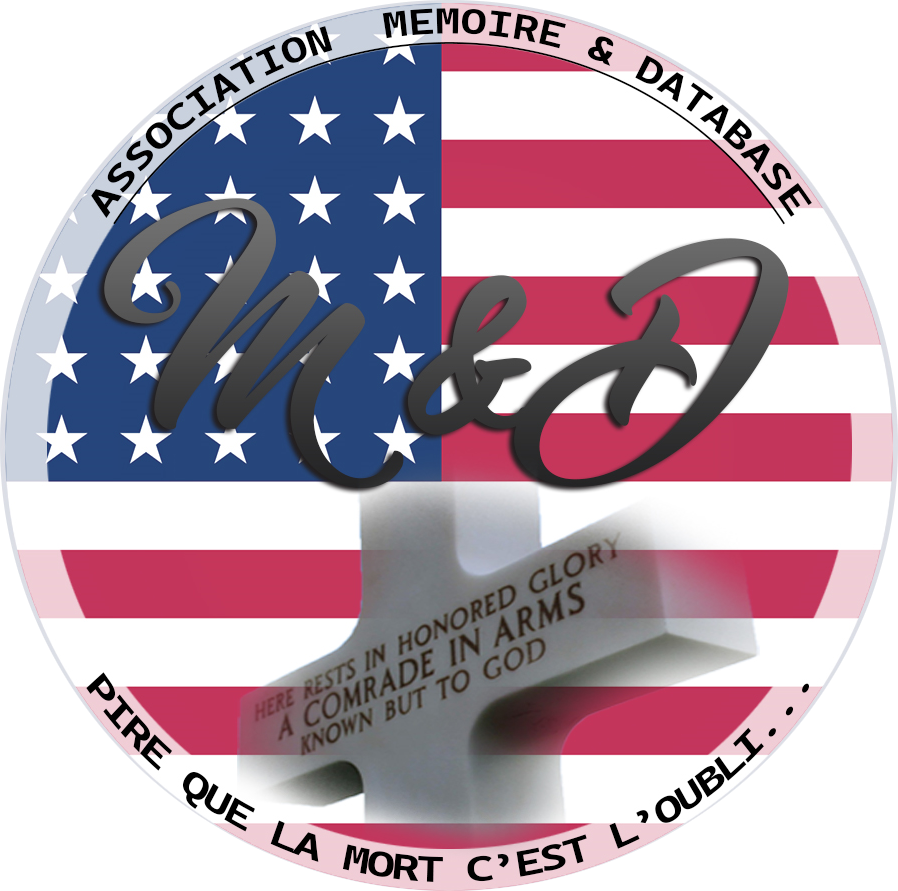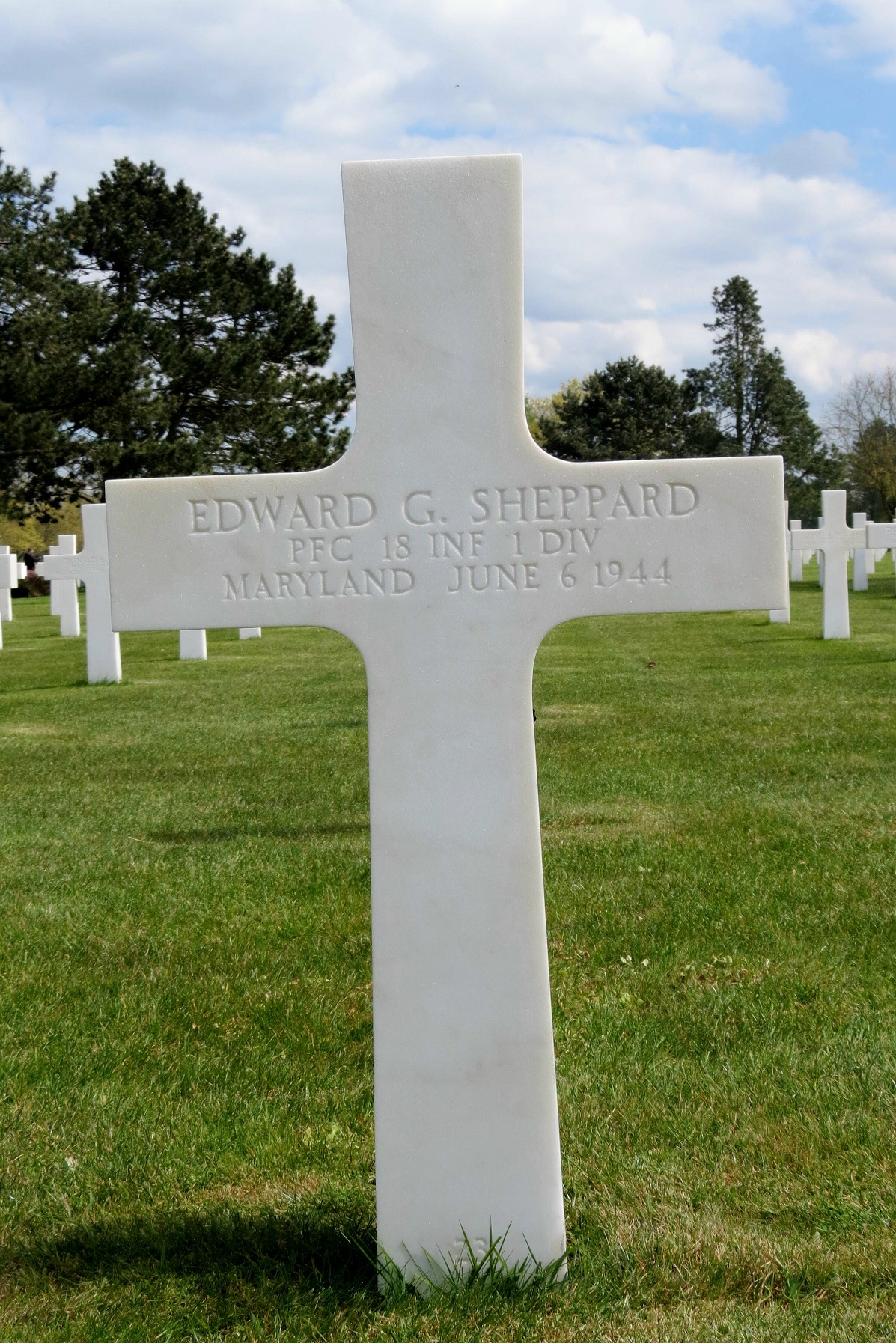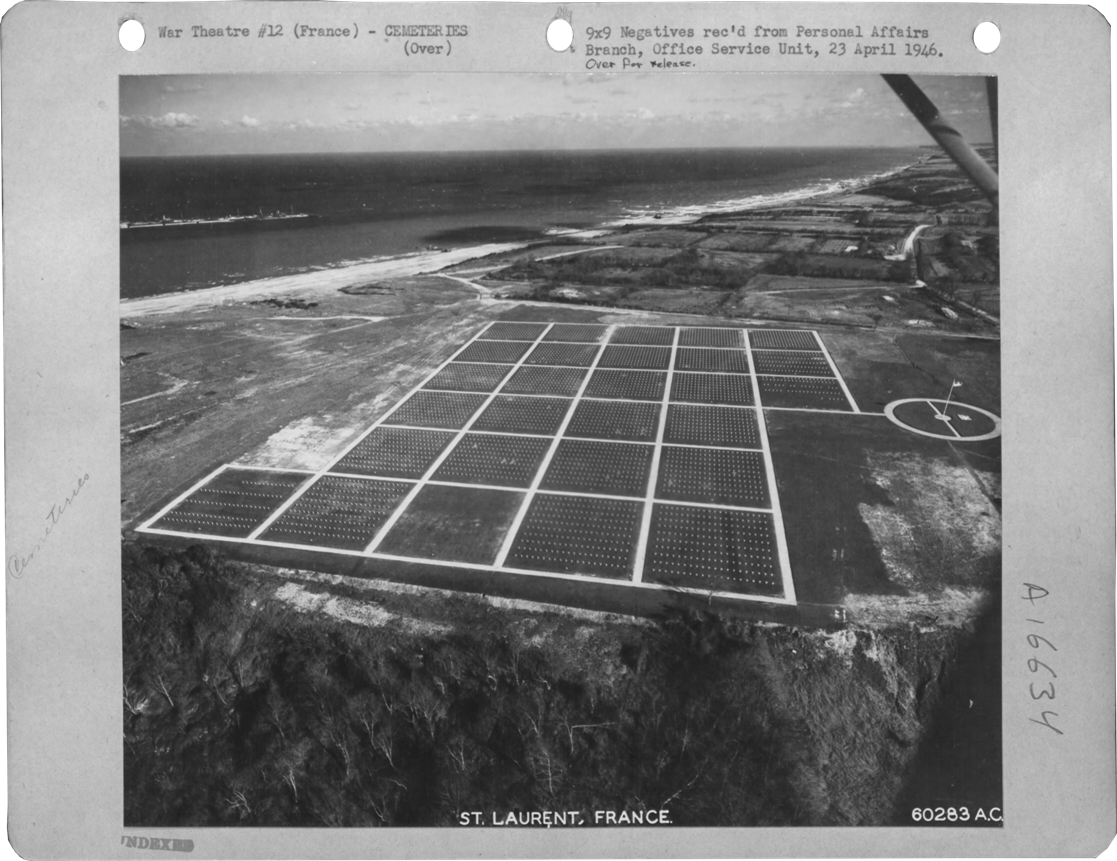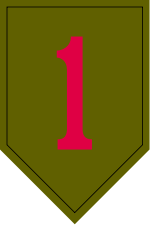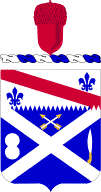|
Edward G. SHEPPARD
| ||||||||||||||||||||||||||||
|---|---|---|---|---|---|---|---|---|---|---|---|---|---|---|---|---|---|---|---|---|---|---|---|---|---|---|---|---|
|
Source : | ||||||||||||||||||||||||||||
| NUMBER OF SERVICE | 33383937 | |||||||||||||||||||||||||||
| AGE | 22 yo | |||||||||||||||||||||||||||
| DATE OF BIRTH | 1922 Baltimore County | |||||||||||||||||||||||||||
| ENLISTMENT STATE | MARILAND | |||||||||||||||||||||||||||
| FAMILY |
Parents : Mary Anna Schatz &Maurice SHEPPARD | |||||||||||||||||||||||||||
| RANK | Private First Class | |||||||||||||||||||||||||||
| FONCTION | Infantry Man | |||||||||||||||||||||||||||
| JOB BEFORE ENLISTEMENT |  | |||||||||||||||||||||||||||
| DATE of ENLISTEMENT | 14 November 1942 Baltimore MARYLAND | |||||||||||||||||||||||||||
| COMPANY | Company G | |||||||||||||||||||||||||||
| BATTALION | 2nd Battalion | |||||||||||||||||||||||||||
| REGIMENT | 18th Infantry Regiment | |||||||||||||||||||||||||||
| DIVISION | 1st Infantry Division | |||||||||||||||||||||||||||
| DATE OF DEATH | 6 June 1944 |
Source : John Kirk | ||||||||||||||||||||||||||
| STATUS | KIA | |||||||||||||||||||||||||||
| PLACE OF DEATH | Easy Red - Omaha Beach | |||||||||||||||||||||||||||
| CEMETERY TEMPORARY |
CEMTERY TEMPORARY of Saint-Laurent N°3582
| |||||||||||||||||||||||||||
| CEMETERY | NORMANDY AMERICAN CEMETERY of Colleville | |||||||||||||||||||||||||||
| GRAVE |
| |||||||||||||||||||||||||||
| DECORATION |
| |||||||||||||||||||||||||||
| ||||||||||||||||||||||||||||
| STORY | ||||||||||||||||||||||||||||
|
By : Randyandjulia (Fold 3) PFC Edward George Sheppard (ASN 33383937) was born on July 28, 1922 in Baltimore, Maryland. His father, Maurice Sheppard, and his mother, Mary Anna Schatz, were both born and raised in Maryland. His father worked as a general laborer and fireman in Baltimore. Edward was the fourth of his parent’s six children. He had three older sisters, a younger brother, and a younger sister. Edward’s parents divorced when he was seven years old. He and his siblings lived with their mother in Baltimore as she raised her family as a single parent. Edward left school before high school and worked as a deliveryman to help with the family. He was working with his father in 1940 when he received his draft card. In November 1942 Edward received his induction notice, and on November 14, 1942 he enlisted with the Army in Baltimore. Edward was assigned to the 18th Infantry Regiment as part of the 1st Infantry Division. The 1st Division was actively fighting in North Africa at the time. He was one of the many who were inducted as replacements and to staff up the division for the upcoming invasion of Europe. He did his basic and infantry training stateside before heading to England near the end of 1943 to join the rest of the 18th Infantry Regiment in England. While in England they trained with veterans of the campaigns in North Africa and Sicily. They did amphibious assault training and participated in exercises in England. For D-Day the 18th Infantry Regiment had other units attached to it and became the 18th Regimental Combat Team (RCT). The 18th RCT would land on the Easy Red sector of Omaha Beach near the E-1 and E-3 exits off the beach. The 18th RCT would act as support for the lead assault teams of the 16th RCT. The lead for the 18th RCT was the 2nd Battalion, which contained Company G (Edward’s unit), and would land at 09:45 (H + 195) followed by the 1st and 3rd Battalions 15 minutes later. On June 6, 1944 the 2nd Battalion of the 18th RCT (2/18) headed for the beach at their appointed time. Their LCPVs (Landing Craft Personnel Vehicles) had difficulty approaching the beach because of the congestion from previous crafts and vehicles, and the troops were delayed by thirty minutes. The impression of the 2/18 troops was that little progress had been made on the beach since most of the troops from the previous landings were pinned down by enemy machine gun, mortar, and artillery fire. Making the congestion worse, was that troops from the 115th RCT had mistakenly landed on top of the 2/18 troops. With the help of tank and naval fire, the 2/18 and 115th had opened the E-1 exit at 11:30. Once in the exit draw, the 2/18 troops were hampered by mines and enemy positions in the draw. The remainder of the 18th RCT weren’t able to land until 13:00, an hour after the 2/18 left the beach. Casualties for the 18th RCT that day on the beach were relatively light, but 28 landing crafts were lost in the congestion to the landing area. It is likely that PFC Edward G. Sheppard was killed in action before getting to the beach. The body of PFC Edward G. Sheppard was buried at the Normandy American Cemetery and Memorial at Colleville-sur-Mer, Normandy, France. At the time of his death he was survived by his parents and his five siblings. His mother died in April 1945, so the decision for the final resting place of his remains was made by his oldest sister. | ||||||||||||||||||||||||||||
Activated/Activé |
Normandy/Normandie |
| 17 Jun 1917 | Days of Combat/Jour de Combat 443 |
| Casualties/Victimes 20 659 | |
Entered Combat/Entré au combat |
|
| 8 Nov 1942 North Africa | |
|
Commanding Generals/Commandants généraux Maj. Gen. Donald Cubbison (Feb 41 - Aug 42) |
Campaigns/CampagnesAlgeria-French Morocco (8 Nov 42 - 11 Nov 42)
|
PLAN DE ROUTE DE LA CAMPAGNE de MEDITERANNEE - CAMPAIGN ROUTE MAP |
|
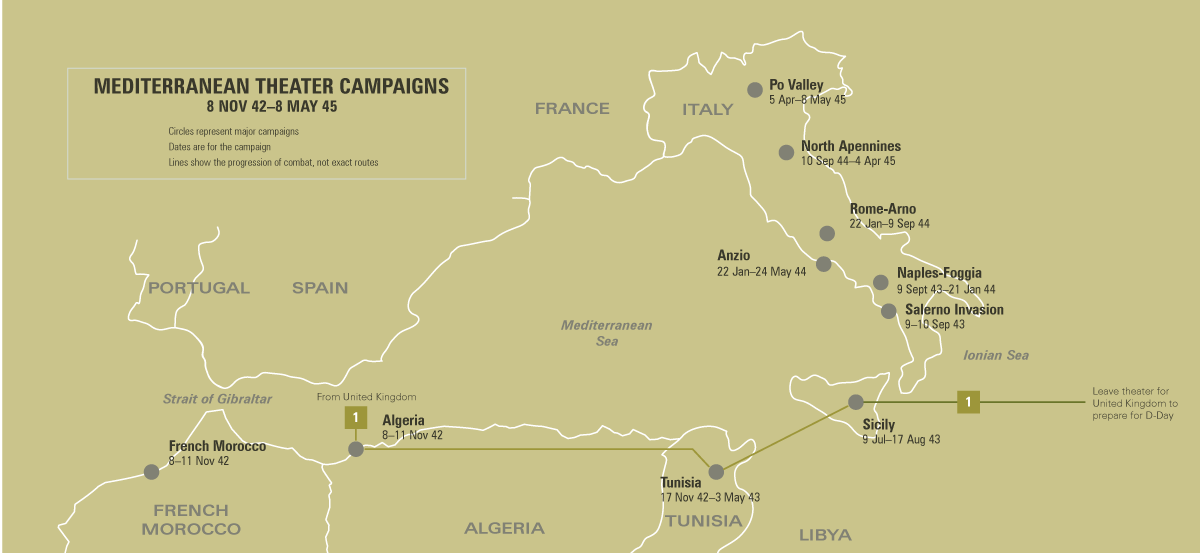 |
|
PLAN DE ROUTE DE LA CAMPAGNE - CAMPAIGN ROUTE MAP |
|
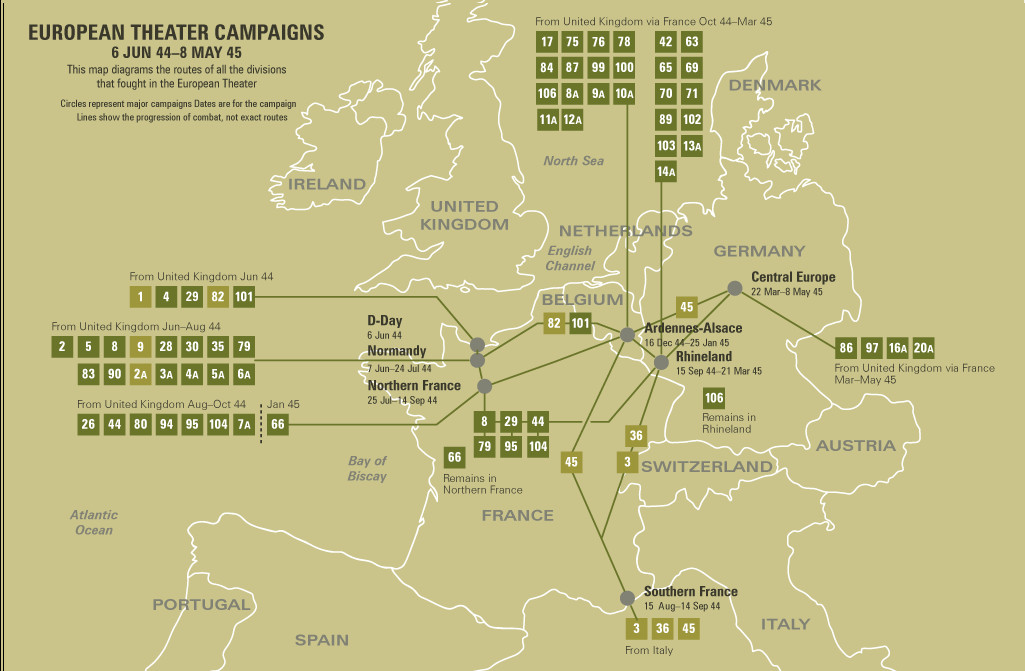 |
|
DIVISION CHRONICLEThe 1st Infantry Division saw its first combat in World War II in North Africa, landing at Oran and taking part in the initial fighting, 8-10 November 1942. Elements then took part in seesaw combat at Maktar, Medjez el Bab, Kasserine Pass, Gafsa, El Guettar, Beja, and Mateur, 21 January-9 May 1943, helping secure Tunisia. The First was the first ashore in the invasion of Sicily, 10 July 1943 ; it fought a series of short, fierce battles on the island's tortuous terrain. When that campaign was over, the Division returned to England to prepare for the Normandy invasion. The First Division assaulted Omaha Beach on D-day, 6 June 1944, some units suffering 30 percent casualties in the first hour, and secured Formigny and Caumont in the beachhead. The Division followed up the St. Lo break-through with an attack on Marigny, 27 July 1944, and then drove across France in a continuous offensive, reaching the German border at Aachen in September. The Division laid siege to Aachen, taking the city after a direct assault, 21 October 1944. The First then attacked east of Aachen through Hurtgen Forest, driving to the Roer, and moved to a rest area 7 December for its first real rest in 6 months' combat, when the von Rundstedt offensive suddenly broke loose, 16 December. The Division raced to the Ardennes, and fighting continuously from 17 December 1944 to 28 January 1945, helped blunt and turn back the German offensive. Thereupon, the Division attacked and again breached the Siegfried Line, fought across the Roer, 23 February 1945, and drove on to the Rhine, crossing at the Remagen bridgehead, 15-16 March 1945. The Division broke out of the bridgehead, took part in the encirclement of the Ruhr Pocket, captured Paderborn, pushed through the Harz Mountains, and was in Czechoslovakia, at Kinsperk, Sangerberg, and Mnichov, when the war in Europe ended.
|
CHRONIQUE DE DIVISIONLa 1ère Division d'infanterie vit son premier combat en Afrique du Nord lors de la Seconde Guerre mondiale, débarquant à Oran et prenant part aux combats initiaux, du 8 au 10 novembre 1942. Les éléments participèrent ensuite aux combats en balançant à Maktar, Medjez el Bab, Col de Kasserine, Gafsa, El Guettar, Beja et Mateur, du 21 janvier au 9 mai 1943, contribuant à la sécurisation de la Tunisie. Le premier a été le premier à terre dans l'invasion de la Sicile, le 10 juillet 1943; il a combattu une série de batailles courtes et féroces sur le terrain tortueux de l'île. Quand cette campagne fut terminée, la Division revint en Angleterre pour se préparer à l'invasion de la Normandie. La première division a attaqué Omaha Beach le jour J, le 6 juin 1944, certaines unités subissant 30% de pertes au cours de la première heure et sécurisant Formigny et Caumont dans la tête de pont. La Division a suivi la percée de Saint-Lô avec une attaque sur Marigny, le 27 juillet 1944, puis a traversé la France dans une offensive continue, atteignant la frontière allemande à Aix-la-Chapelle en septembre. La Division a assiégé Aix-la-Chapelle après un assaut direct, le 21 octobre 1944. Le Premier a ensuite attaqué à l'est d'Aix-la-Chapelle par Hurtgen Forest, jusqu'à la Roer, et s'est installé dans une aire de repos le 7 décembre pour son premier repos. combat de mois, quand l'offensive de von Rundstedt se déchaîna subitement, le 16 décembre. La division a couru vers les Ardennes, et combat continuellement du 17 décembre 1944 au 28 janvier 1945, a aidé à émousser et à retourner l'offensive allemande. La Division attaqua de nouveau la ligne Siegfried, traversa la Roer, le 23 février 1945, et se dirigea vers le Rhin, traversant la tête de pont de Remagen, du 15 au 16 mars 1945. La division sortit de la tête de pont. dans l'encerclement de la poche de la Ruhr, capturé Paderborn, poussé à travers les montagnes du Harz, et était en Tchécoslovaquie, à Kinsperk, Sangerberg et Mnichov, lorsque la guerre en Europe a pris fin.
|
| SOURCE INFORMATION & PHOTO | Armydivs.squarespace.com |
|---|
| SOURCE INFORMATION & SOURCE PHOTO | Aad.archives.gov - Abmc.gov - Findagrave.com - Honorstates.org - Fold3 |
|---|---|
| PROGRAMMER | Henri, Garrett, Clive, Frédéric & Renaud |


